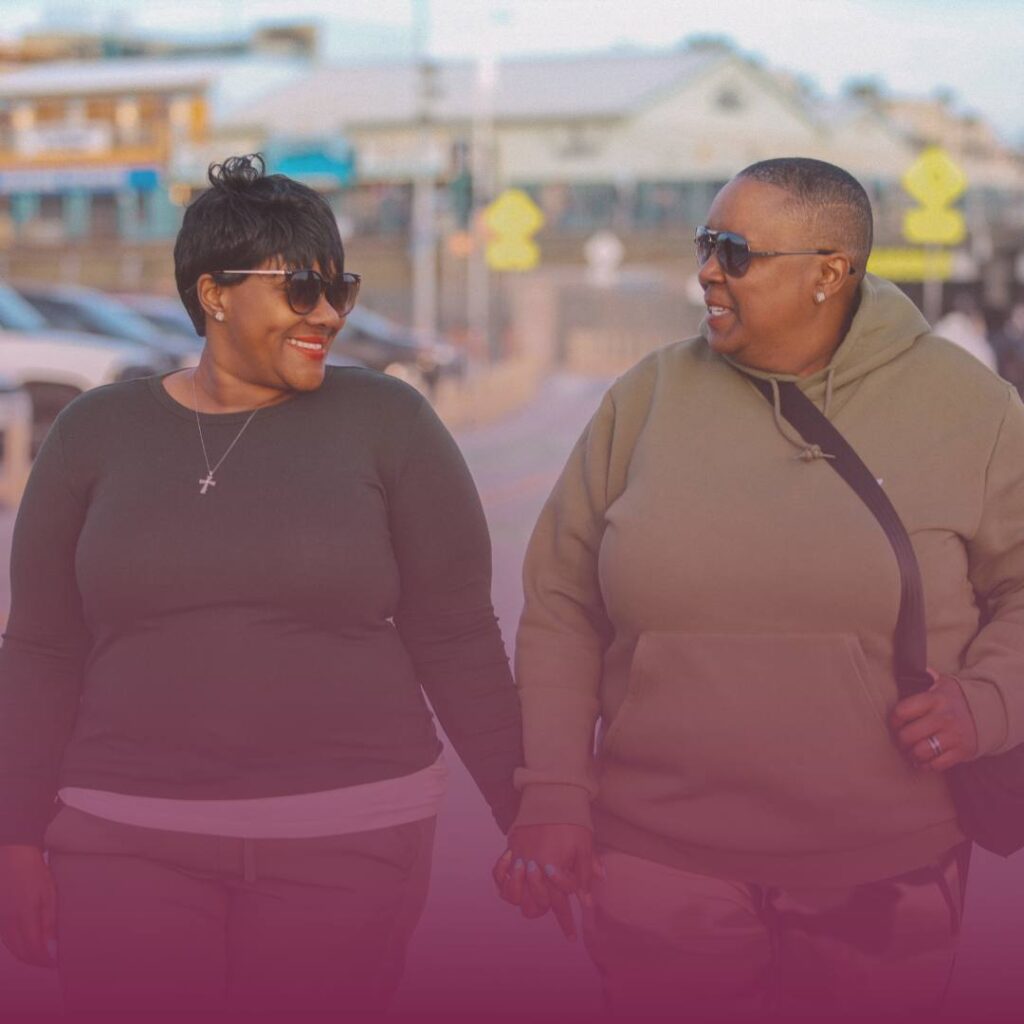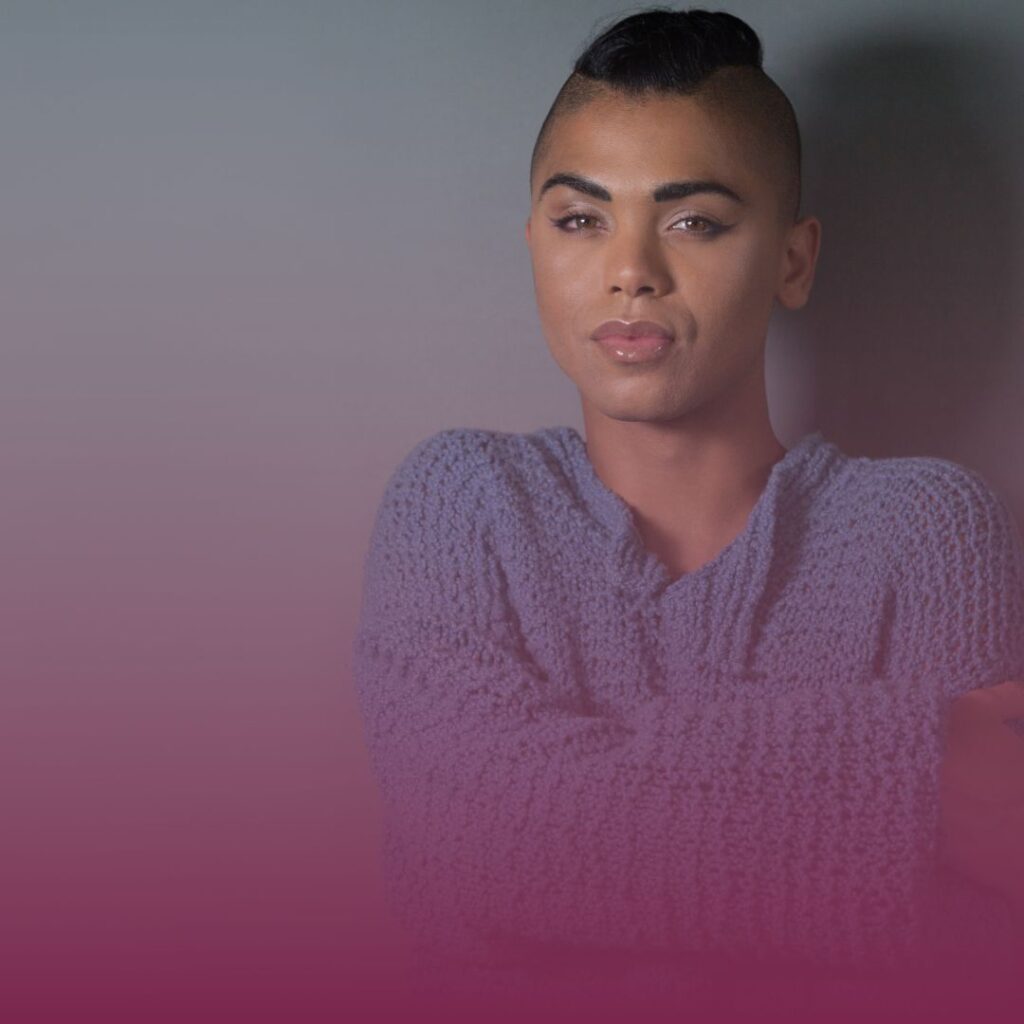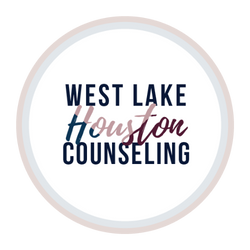Finding an Affirming Therapist

Previous PostNext Post ADVICE Finding an Affirming Therapist Finding a therapist may seem daunting, so here are some helpful tips when conducting research. Finding an affirming therapist. Affirming, competent mental health therapists are available to support and help you heal. Here are some helpful tips to consider when finding an affirming therapist. The LGBTQIA+ community encounters stressors that negatively affect their physical and mental well-being. Some of these stressors include rejection, discrimination, violence, unaffirming spaces and/or providers, and health care disparities. These experiences can be traumatic, and lead to feelings of anxiety, fear, helplessness, discouragement, or mistrust. Internal and/or external stressors coupled with trauma can feel overwhelming and as if there is no way out. Affirming, competent mental health therapists are available to support and help you heal. Mental health therapists have varying levels of expertise and utilize a range of treatment modalities. They can help you in areas such as identity exploration, coming out, gender transition, trauma recovery, stress management, and skill building. Looking for a therapist may seem daunting, so here are some helpful tips to consider when conducting your search. Gather Resources. Reach out to your primary care doctor or other trusted providers for a list of referrals. If you have health insurance, log into to your account to search for mental health therapists or call the insurance company directly to request this information. Ask family members or friends for resources too. They may be familiar with clinics or organizations that have connections with affirming therapists. Request a phone consultation. Therapists typically offer brief phone consultations to prospective clients who may want more information about their clinical background, expertise, and special populations they serve. Consultations offer you an opportunity to know the therapist more and determine whether they are a match for your needs and concerns. It is also a great way to get a glimpse of their personality and therapy style. Ask Questions. During your phone consultation or intake appointment with a therapist, you are welcome to ask the following questions, “How are you going to keep me safe?”, “In what ways are you an affirming provider?”, and “What is your experience working with individuals with similar concerns as mine?” It is important to work with a therapist who you connect and feel safe and comfortable with as this will maximize your therapy experience. Finding an affirming therapist. Choose the Right Fit. Once you have completed your search, take the time to compare the therapists whom you spoke with. Trust your intuition. If you later learn you are not connecting well with a therapist, let them know. They can adjust their therapeutic approach to fit your needs and concerns. If that does not work, then it is okay to terminate services. They will gladly assist and connect you with another provider who might be a better fit for you. Affirming therapists are out there to help you begin the healing process. It might take a while to find a match, just remember to be patient and trust yourself and the process. You will be on your therapy journey before you know it! All Posts Advice Couples Therapy EMDR Therapy Health & Wellness Holidays Individual Therapy LGBTQ LGBTQ+ Therapy Links Mental Health Moment Services Teen Therapy Teens Therapist Uncategorized Dante Knew He Had to do Something Have You Suddenly Lost Your Confidence? Try These Tips to Regain Your Swagger! 5 Tips for Gift Giving
Proud Love: Confidence in Sharing Your Same Sex Relationship

Previous PostNext Post RELATIONSHIPS Proud Love Confidence in Sharing Your Same-Sex Relationship Let’s Get Down to Brass Tacks: Confidence in Sharing Your Same-Sex Relationship Why Does This Even Matter? You may lack confidence in sharing your same-sex relationship if you keep it private. If so, then you are all too familiar with the ins-and-outs of keeping your life skillfully divided. To do this, you have to wear ‘masks.’ We all wear them. There’s the mask for work, a mask for neighbors, a mask for distant relatives, and masks for friends (depending on the friend circle – don’t get me started here, that’s for a different blog). When you’re in the habit of hiding a relationship (in this case, a same-sex relationship), the negative effects of doing so can become compounded over time. When we hide a loving relationship, we devalue its relevance and significance in our lives which can erode the relationship over time. Couple conflicts are generally made worse when a relationship is hidden out of fear of what may happen if it is shared. This means that “regular relationship problems” are generally more difficult to navigate between same-sex partners who otherwise would not be facing this issue in the first place. The Fear in the First Place There is often good reason to be afraid. Let’s face it: most of us (all alone) are no match against the negative messages that suggest same-sex relationships as inferior or unacceptable. Society requires that individuals fit into binary gender roles of masculinity and femininity. This can lead to discrimination against those who do not conform to these roles. Folks generally make assumptions about sexual orientation. Many people assume that everyone is heterosexual until proven otherwise. This can lead to queer individuals feeling like they must come out to everyone, which can be a daunting and anxiety-inducing process. I often hear the phrase: “I feel like I’m constantly coming out”…whether it be at work or the grocery store. And no, this isn’t because you feel the need to let people know ‘what you like,’ but in response to a person assuming that your partner is the opposite sex. There is still a pervasive lack of LGBTQ+ representation in media. LGBTQ+ individuals are frequently misrepresented in mainstream media, leading to a lack of visibility and real understanding. This can perpetuate harmful stereotypes and negative attitudes towards the LGBTQ+ community. Worse, it can reinforce stigma for a person who does not relate to the commonly accepted stereotypes about LGBTQ+ people. Legal discrimination still exists in many places. In many countries, same-sex relationships are not legally recognized or protected. This lack of legal protection can cause individuals to fear discrimination, harassment, and violence from others who do not accept their orientation or identity. Fear of how your family relationships might change is a legitimate concern. Whether you are someone in your family who plays the role of: the hero – the person who represents the family ideal, or the “golden child” the scapegoat – the person who receives the most blame or disappointment the mascot – the person who deflects tension or conflict with distractions such as humor the lost one – the person who chooses to avoid difficult family interactions by engaging in socially acceptable outlets (i.e working an extra job to avoid what’s happening at home, but justifying it based on the need to earn more money). …you stand to be affected by the reactions and responses of those you love. People in same-sex relationships frequently worry about how their family’s perceptions of them might negatively change, loss of relationship trust, and the fear of being seen as more dishonest than they did prior to sharing their relationship. Did I Mention There Was Good News? The best part about sharing your same-sex relationship with others is the positive impact on the relationship itself. It can eliminate the barriers to addressing problems that need to be worked on between same-sex partners. Sharing your same-sex relationship can lead to improved mental health and well-being. Keeping secrets or living a double life can be emotionally exhausting and lead to anxiety and depression. By fully embracing your identity and sharing a healthy relationship with others, you can reduce stress and feel more authentic. Sharing your same-sex relationship can also lead to stronger relationships with family and friends alike. It can help foster communication, trust, and mutual understanding, which can ultimately lead to more fulfilling relationships. By sharing your relationship, you also challenge societal stigmas and promote acceptance of the LGBTQ+ community, one relationship at a time. Your honesty and authenticity can inspire others to do the same and create a more inclusive and welcoming environment for everyone, regardless of their sexual orientation or gender identity. 5 Tips for Building Confidence in Sharing Your Same-Sex Relationship So, you might be wondering: “What can I do now to build more confidence in sharing my same-sex relationship?” I would suggest reflection in the following areas: Think about who you want to share your relationship with and why: consider who you might feel safe sharing your relationship with and what the benefits would be to you and your relationship. Know your boundaries ahead of time: the thought of negotiating your identity, speaking on behalf of the entire LGBTQ+ community, or the need to be prepared for a debate can feel overwhelming and produce undesirable feelings. Consider the limitations you will allow yourself if/when people ask questions about your experience. You have the right to say “I’m happy to share some of my experiences with you, but I’m not comfortable having a debate.” 3. If you don’t trust many people, consider therapy as a starting place. Therapists are sworn to secrecy so that they can help their clients get the most from therapy. Therapy is also a great place to practice being who you are so that it can become easier over time to create other healthy relationships where you can ‘show up’ authentically. 4. Take it one step at a time and celebrate small victories: for countless LGBTQ+ people, coming out is
Navigating Cultural Barriers to Coming Out as LGBTQ+

Previous PostNext Post LGBTQ AFFIRMING SUPPORT Navigating Cultural Barriers to Coming Out as LGBTQ+ Learn how to navigate and find support in a challenging journey of self-acceptance and identity exploration. Navigating Cultural Barriers to Coming Out as LGBTQ+ Overcome obstacles and embrace your true identity Let’s Cut to the Chase There are many cultural factors to consider for people who come out as LGBTQ. These factors become barriers when a person feels the pressure to hide or conceal an aspect of their identity for the sake of belonging. These barriers might stem from the larger society, from religious beliefs, and/or family expectations. Coming out means that an individual must face judgment or even rejection from the people in their lives, which can be very difficult to overcome. Furthermore, there might also be certain laws in place that make it difficult or even illegal for someone to express their identity. All of these factors can make coming out as LGBTQ an incredibly challenging process, and one which requires a lot of resilience and bravery. Ultimately, the barriers are there to be broken down in order for individuals to live authentically and proudly. What are the Barriers? There are aspects of religion that can be a major barrier for those coming out as LGBTQ. In many religious communities, being openly queer is seen as sinful and in some places, punishable by law. This can make it difficult for someone to come out, especially if they feel that their family or church will not accept them. Furthermore, if religion previously served a positive purpose in one’s life (i.e growing up in a church community), the notion of shifting one’s beliefs or abandoning certain religious teachings can cause internal distress. In general, it can feel unfavorable to question beliefs that have been held for a long period of time. Religious beliefs can also cause internalized oppression and guilt, making it harder to come to terms with one’s identity, much less, express it to others. Society often plays a role in the expectations and misconceptions about LGBTQ individuals. These can range from unrealistic demands in terms of dress, behavior, or lifestyle, to a lack of understanding of the diversity within the community itself. Societal stereotypes about what it means to be ‘queer’ are often limiting and do not reflect the diversity of experiences that exist from person to person. There are also prejudices that can affect how individuals perceive LGBTQ people, and even how they are treated in certain contexts. These misconceptions create the conditions for unsafe spaces for individuals to come out as LGBTQ and be accepted. Family expectations are perhaps one of the strongest barriers to coming out. Fear of how coming out might damage relationships is a significant concern for many LGBTQ people. Worrying about how relationships may change or connections that may be lost frequently play a role in delaying the disclosure of one’s identity within their family. Fear of how one’s family may perceive them differently is a valid and common concern among LGBTQ people. For this reason, many LGBTQ people might feel the need to overcompensate for their identity long before coming out to their family as a way to create personal comfort within their family. Tips for Navigating Cultural Barriers to Coming Out Be open to connecting with others with similar experiences. It is difficult to navigate cultural barriers in isolation. Connecting with others (even virtually) can lead to understanding yourself better and developing comfort in receiving support around cultural issues. This may be found in online forums and social media groups. Likewise, it may also be helpful to reach out to friends or acquaintances who have come out under similar circumstances. 2. Seek professional support. Even if you are not prepared to share your identity with others, it may be helpful to establish a relationship with a trusted professional (therapist, counselor, coach, etc.) who specializes in coming out issues. A professional can help you with these issues as well as support you in prioritizing your mental and emotional well-being and addressing internalized guilt or shame. This also involves the work of self-love and self-acceptance. It is also imperative to identify medical professionals who are knowledgeable and sensitive to LGBTQ needs. 3. Increase your knowledge. Attend workshops and events for LGBT individuals and be open to learning about LGBTQ history, culture, and rights. Seek out LGBTQ writers, artists, politicians, leaders, etc. who have contributed to LGBTQ advancement in a positive way. Local LGBTQ organizations and resources in Houston, TX The Montrose Center: This community center offers a wide range of services for the LGBTQ+ community, including housing assistance and resources for older adults. PFLAG Houston: PFLAG is an organization that offers support, education, and advocacy to LGBTQ+ individuals and their families. The Houston chapter provides a variety of resources. Legacy Community Health: They offer specialized medical and behavioral health services tailored to meet the unique needs of LGBTQ+ patients. LGBT Switchboard Houston: This helpline provides information, counseling, and referrals to LGBTQ+ individuals in need. *Please note that these are just a few of the many resources available in Houston, Texas for the LGBTQ+ community. It’s always a good idea to reach out directly to these organizations to learn more about the services they offer. All Posts Advice Couples Therapy EMDR Therapy Health & Wellness Holidays Individual Therapy LGBTQ LGBTQ+ Therapy Links Mental Health Moment Services Teen Therapy Teens Therapist Uncategorized Dante Knew He Had to do Something Have You Suddenly Lost Your Confidence? Try These Tips to Regain Your Swagger! 5 Tips for Gift Giving
How to Support LGBTQ Teens Coming Out

Vestibulum nec velit ante. Praesent dignissim interdum est, in lacinia elit pretium nec. Aliquam erat volutpat. Fusce laoreet mi leo, a facilisis dui tempus id. Pellentesque lacinia eget massa in commodo. Pellentesque faucibus rutrum velit, et maximus velit bibendum et. Aenean varius, leo non venenatis feugiat, erat elit interdum ligula, in viverra diam.
